In the realm of solar technology, solar panel connectors stand out as crucial components, orchestrating the seamless transfer of energy within photovoltaic systems. These connectors go beyond physicality, embodying a nuanced interplay essential for optimal solar array performance. As the global demand for renewable energy continues to grow, a profound understanding of the intricacies surrounding solar panel connectors becomes imperative.
In 2020, the world harnessed an impressive 856 terawatt hours of solar energy, highlighting the increasing reliance on solar power. The significance of connectors becomes evident, as efficiency directly contributes to enhanced energy yield. This article delves into the various types of solar panel connectors, shedding light on their unique characteristics. From the widely embraced MC4 connectors to the robust Tyco Solarlok and high-capacity Amphenol Helios H4, each connector plays a distinct role in shaping the efficiency and reliability of solar power systems.
As we navigate the landscape of solar panel connectors, the goal is to uncover the evolution and insightful data guiding the selection of these vital components. This understanding empowers those in the renewable energy sector to make informed decisions, ultimately unlocking the full potential of solar technology.
Solar panel connectors play a crucial role as vital conduits for energy transfer within the realm of solar technology. Their significance extends beyond mere physical connections, serving as the pivotal element orchestrating a nuanced interplay of engineering considerations.
What Are Solar Panels Connectors?
This connection ensures the seamless flow of energy throughout the lifespan of a solar array. Meeting stringent voltage and current requirements is essential for these connectors, as it guarantees optimal performance.
Despite their pivotal role, solar panel connectors are often undervalued. The engineering behind them must be robust enough to withstand the rigors of weather, temperature fluctuations, and external stressors.
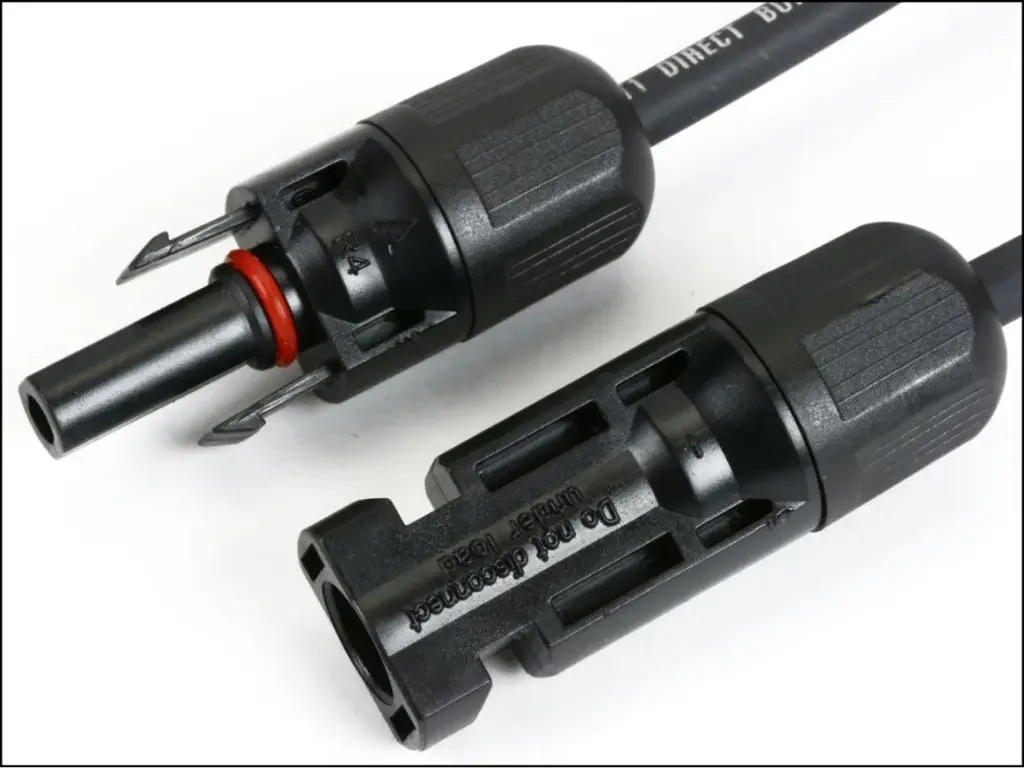
In simpler terms, solar panel connectors serve as the connective tissue of PV installations, enabling the interconnection of solar panels for seamless power continuity. The evolution from MC3 to MC4 connectors mirrors the industry’s commitment to overcoming challenges and enhancing safety and usability. Considering the continuous growth in solar energy capacity, which reached 850.2 GW globally, connectors become even more critical.
Why Are Solar Panels Connectors So Important?
In the realm of renewable energy, solar panel connectors wield substantial influence over the efficiency and reliability of solar power systems. Statistics underscore their critical role in optimizing energy transfer within photovoltaic (PV) installations.
According to industry data, the efficiency of connectors correlates directly with a notable increase in energy yield, significantly enhancing the overall output of solar panels. Well-engineered connectors not only contribute to improved energy efficiency but also directly impact voltage and current requirements, ensuring peak performance.
Amidst the escalating demand for renewable energy solutions, the importance of solar panel connectors in shaping the effectiveness of solar technology cannot be overstated. As we explore the diverse solar panel connector types, these statistics emphasize the fundamental role connectors play in realizing the full potential of solar power systems.
Types of Solar Connectors
Each type of connector comes with its unique characteristics, designed to meet specific requirements and industry standards. Here, we delve into the general characteristics of solar panel connectors and explore some common types.
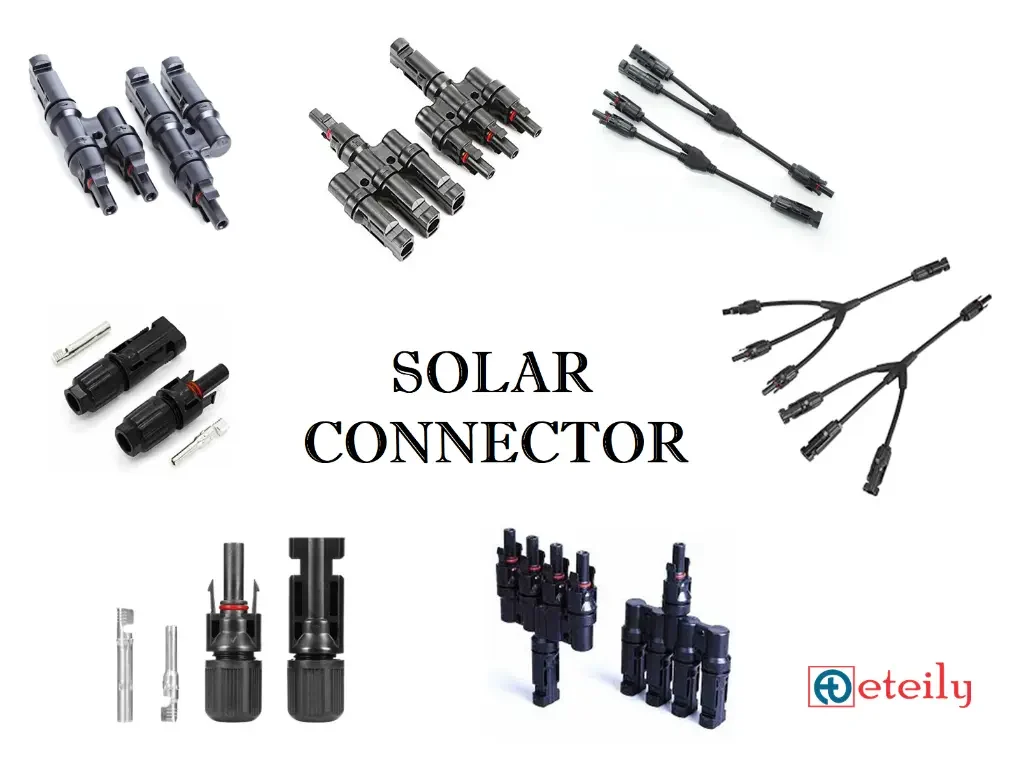
Solar panel connectors, regardless of type, share certain fundamental characteristics essential for their performance and reliability. Moreover, they should be designed for ease of installation and maintenance, ensuring a secure and efficient connection throughout the lifespan of the solar array.
MC4 Connectors
MC4 has achieved widespread use, with over 90% of solar installations globally relying on their proven performance and reliability.
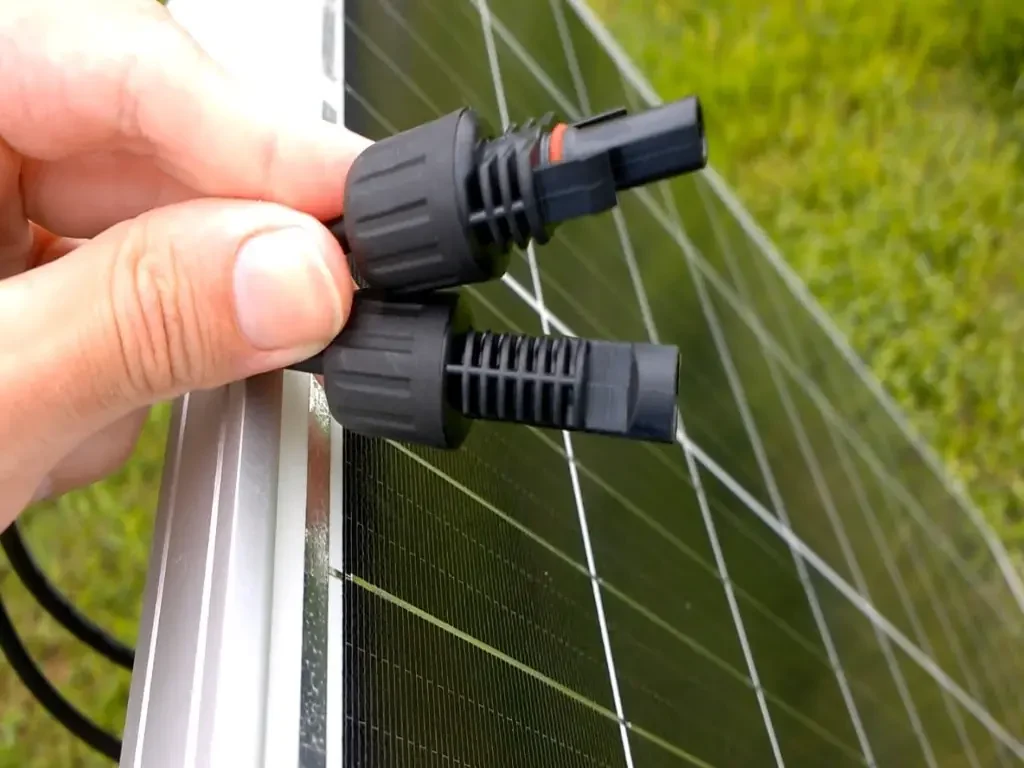
The unique design, incorporating both male and female connectors with a snap-in locking feature, has established MC4 solar connectors as efficient facilitators of energy transfer.
These connectors excel in streamlining connections, ensuring swift and secure interactions that contribute to optimal energy transfer within solar systems. The user-friendly design allows for seamless installation and removal, enhancing the practicality of MC4 connectors.
The widespread adoption of MC4 solar connectors highlights their proven track record and ability to meet the demanding requirements of solar installations. Whether employed in residential rooftops or expansive commercial solar farms, MC4 solar connectors continue to play a pivotal role in ensuring the reliable and efficient operation of solar energy systems.
Tyco Solarlok Connectors
Tyco Solarlok connectors showcase an impressive 20-year lifespan, demonstrating exceptional durability even in challenging conditions, a testament to their reliability and effectiveness.
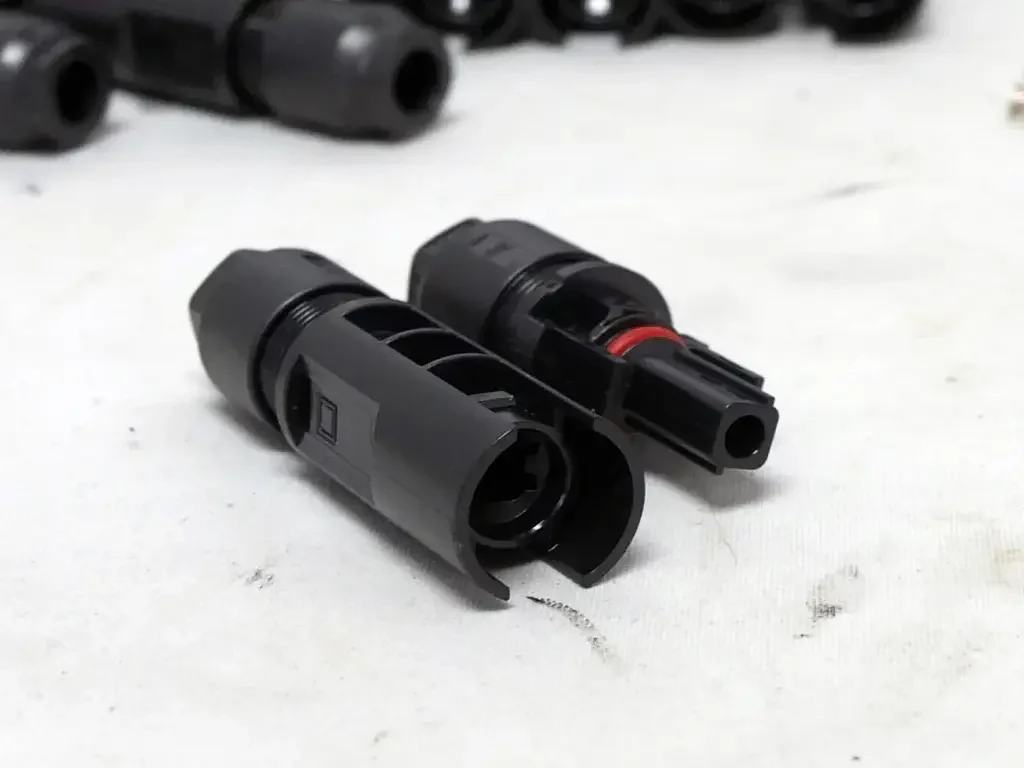
Including a locking latch mechanism enhances the security of connections, ensuring stability even in challenging weather conditions. Their resilience to UV radiation and temperature fluctuations makes Tyco Solarlok connectors a trusted choice for various outdoor solar installations.
Amphenol Helios H4 Connectors
Amphenol Helios H4 connectors are designed for high current-carrying capacity and durability. They prioritize efficiency to minimize power losses during energy transfer.
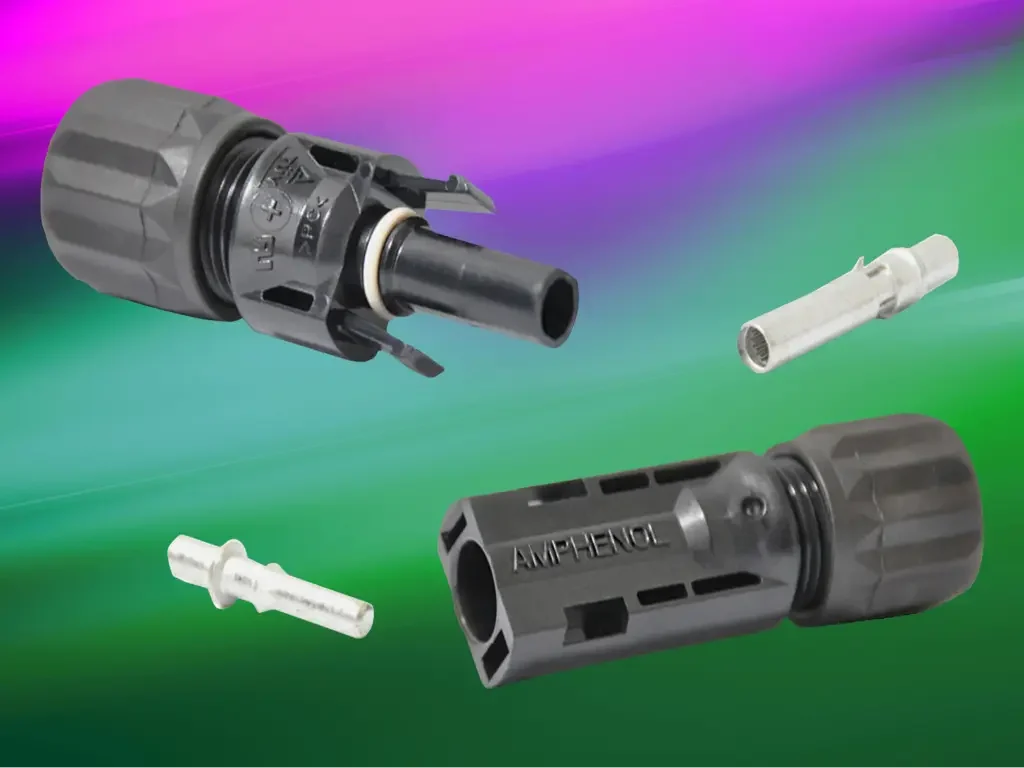
The quick-locking mechanism of Helios H4 connectors enables swift and secure connections, making them suitable for various solar applications, including utility-scale installations. They are engineered to endure environmental and mechanical stress, ensuring long-term performance.
Stäubli MC4 Evo 2 Connectors
This compact and versatile connector is compatible with standard MC4 and MC4-Evo 2 connectors, offering exceptional adaptability. It holds official approval for high-voltage applications (DC 1500 V) according to specific standards, ensuring reliable performance in such conditions. Engineered for durability, it boasts robust resistance to salt spray.
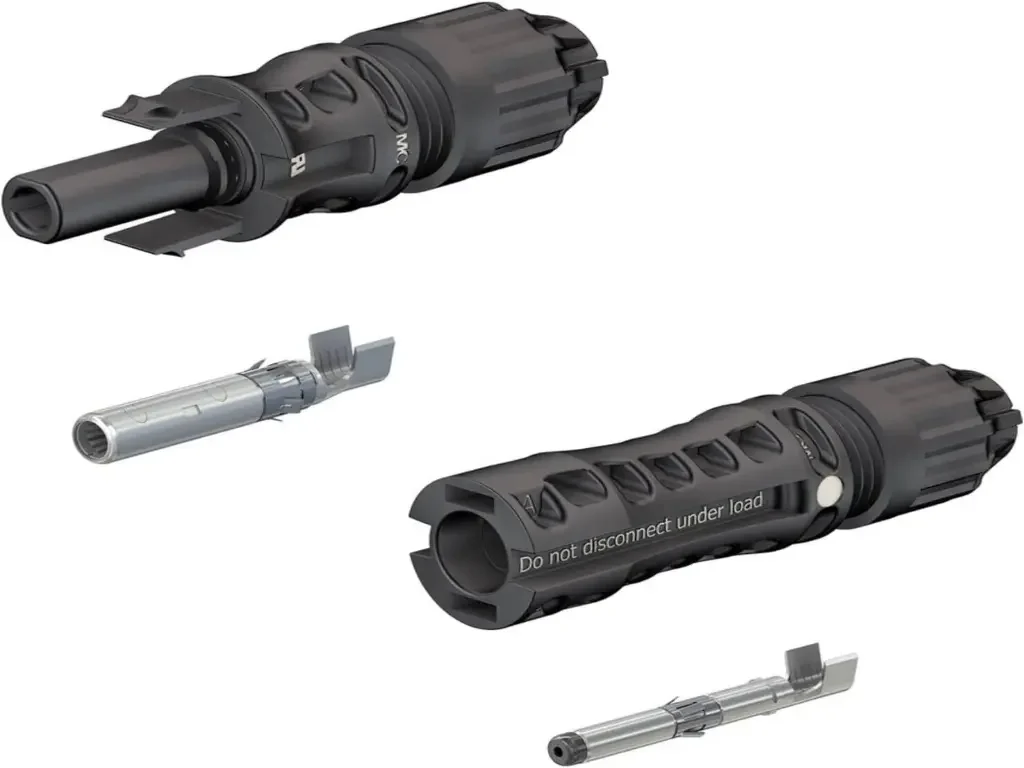
Employing the proven MULTILAM technology, this connector maintains consistent efficiency throughout its lifespan, making it a dependable option for solar energy systems.
Sma Sunclix Connectors
SMA Sunclix connectors are designed with user-friendliness and durability in mind. They feature a push-pull mechanism for convenient and secure connections.
Sunclix connectors are well-suited for solar inverters and string combiner boxes. The push-pull design facilitates easy handling, and their robust construction ensures reliable electrical contacts, even in challenging environmental conditions.
MC3 (Multi-Contact 3)
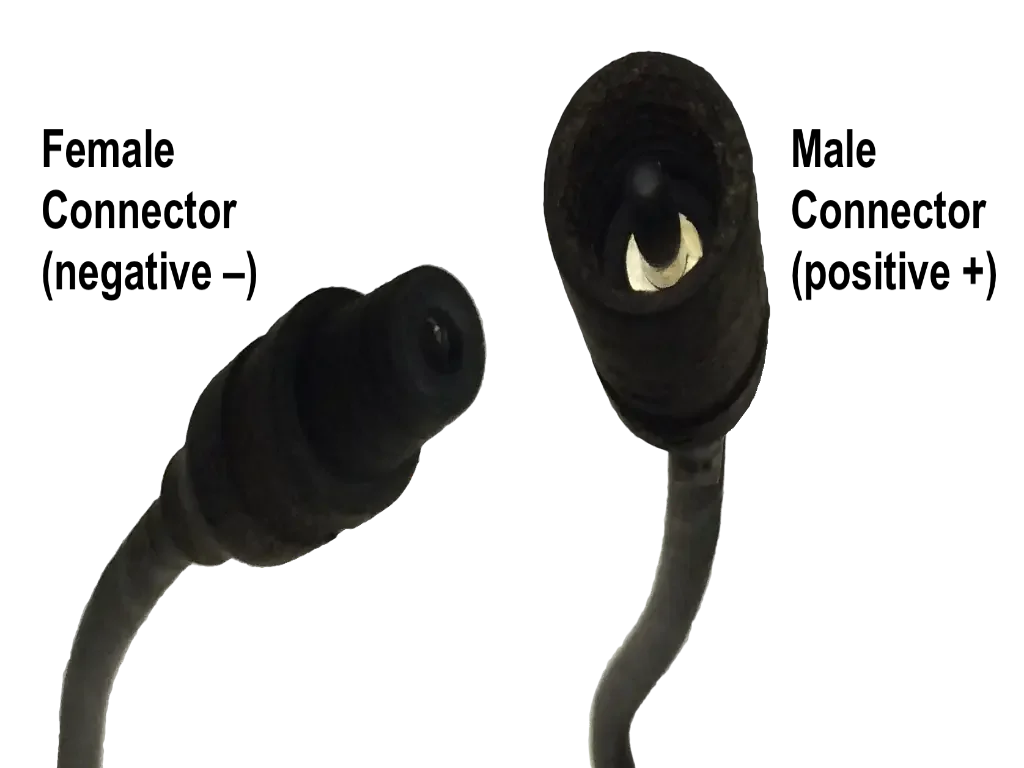
MC3 is an older version of MC4. It is similar to MC4 but is less commonly used. Typically found in older solar installations.
Anderson Powerpole
Anderson PowerPole is a general-purpose connector with a modular design and genderless connectors. It is commonly employed in portable solar setups and DIY solar projects.
Multi-Contact (MC)
Multi-Contact is the original manufacturer of MC4 connectors. They are renowned for their reliability and widespread use in the solar industry, making them suitable for various solar installations.
The choice of solar panel connectors depends on various factors, including the specific requirements of the solar installation, environmental considerations, and the desired level of performance and longevity. As technology advances, connectors continue to evolve, offering improved features to meet the ever-growing demands of the solar energy industry.
How Are Solar Panels Connectors Used
Solar panel connectors are integral to the functionality of photovoltaic systems, facilitating efficient and secure energy transfer. Here’s a general overview of their operation:
- Establishing Connections
The average solar panel has a power output ranging from 250 to 400 watts. Connectors join the positive and negative terminals, forming a closed circuit. This enables the flow of direct current (DC), typically produced at voltages ranging from 30 to 60 volts.
- Quick and Secure
MC4 connectors, widely used, boast a quick and secure snap-in mechanism. The locking feature ensures a firm connection, which is crucial for preventing disconnection. Swift connections contribute to the efficiency of solar systems, minimizing downtime.
- Maintaining Low Resistance
Connectors maintain a low-resistance point of contact to enhance energy transfer. Low resistance is critical for minimizing power losses during transmission. Well-engineered connectors contribute to the overall efficiency of solar arrays.
- Adapting to Environmental Conditions
Solar installations endure various environmental stressors. Connectors, designed for outdoor use, withstand weather fluctuations, UV radiation, and temperatures ranging from -30 °C to 90°C. This adaptability ensures reliable performance in diverse conditions.
- Compatibility
Ensuring compatibility is essential for optimal performance. Using the right connectors with compatible cables is crucial for maximizing energy transfer.
How To Choose the Correct Solar Panel Connector
When you’re picking a solar panel connector, there are important things to think about to make sure everything works well:
- System Needs
Understand what your solar energy system needs. Think about the voltage, current, and power of your solar panels and other parts. This helps you choose the right connector type and size.
- Connector Compatibility
Ensure the connectors you pick work well with your solar panels and other parts. Check the manufacturer’s info to be sure the connectors fit your setup.
- Easy Installation
Think about how easy it is to put in the connector. Some might need special tools, while others are quick and don’t need tools. Choose one that matches your skills and the installation requirements.
- Reliability and Toughness
Pick connectors that are known to be reliable and tough. Look for ones that can handle different weather conditions like temperature changes, UV exposure, and moisture.
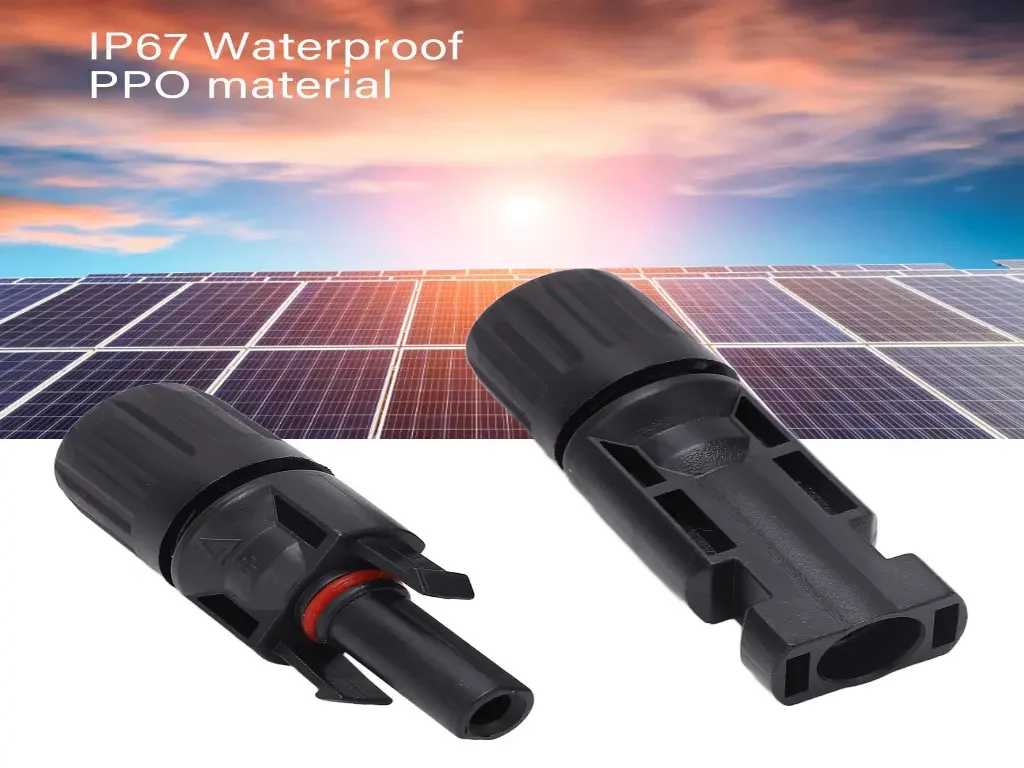
Remember, the quality of your solar panel connectors can affect how well your solar energy system works and how safe it is. Choose connectors that follow industry standards and fit with your setup.
Conclusion
As we delve into the specifics of connector types, their evolution mirrors the industry’s commitment to innovation, safety, and usability.
Solar panel connectors, often underrated, are the connective tissue of photovoltaic installations, enabling seamless power continuity. As the demand for renewable energy solutions continues to escalate, developing an understanding and choosing the right solar panel connectors becomes imperative for unlocking the full potential of solar technology.
In the intensifying global pursuit of renewable energy solutions, this imperative role of awareness and selection regarding the right solar panel connectors comes to the forefront. It becomes a crucial step in unlocking the full potential of solar technology, contributing to the sustainable evolution of the energy landscape.

